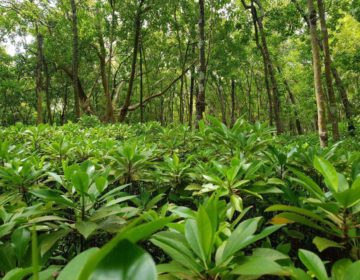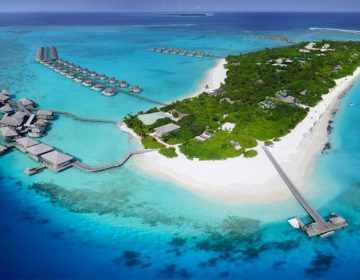The words ‘climate change’, ‘migration,’ and ‘islands’ evoke images of “climate change refugees” fleeing from paradise as the ocean mercilessly rises over pristine beaches. These representations rarely hold in reality. Phrases such as “climate refugees” and “climate migrants” are severely criticized in scientific literature, and many islanders object to the terms. The Maldives is a perfect case to illustrate how islanders view links between climate change and migration.

The country, an Indian Ocean archipelago with 1,190 islands grouped into 26 low-lying coral atolls, has its highest point just 2.4 meters above sea level. Unless policymakers understand the Islanders’ thoughts on migration as a climate to fail, hurting the people whom the policies were designed to help. Maldivians are concerned about sea-level rise, but it is not yet an everyday, experienced reality. More urgent are the Islanders’ immediate, non-climate change related issues, such as lack of housing and overcrowding around the Maldivian capital, freshwater scarcity, and inadequate waste management. In the future, though, without climate change adaptation measures addressing sea-level rise, climate change impacts may increasingly influence Maldivian migration decisions.
In the meantime, Maldives continues to experience slow onset hazards, such as coastal erosion, sea-level rise, salinity intrusion, and changes in monsoon patterns and rainfall. These changes affect local livelihoods, housing, freshwater access, food production, and fisheries. Consequently, scientists and the government discuss migration as an adaptation strategy for the population. Migration as adaptation refers to displacing entire communities once all other adaptation possibilities are exhausted. Considering Maldives’ location and Maldivians’ attitudes toward climate change migration is especially pertinent to Maldives’ future. As the Maldivian government begins to consider migration as an adaptation for its citizens, a recent study examined Maldivians’ perceptions of projected climate change impacts on their archipelago and migration as a potential climate change adaptation strategy.

Because Maldivians typically migrate for livelihood-related, social and environmental reasons, climate change is just one more factor among many aspects impacting migration decisions. Its importance varies among individuals, but Maldivians generally place little blame on climate change as a reason for leaving the Maldives. Instead, Maldivians consider environmental change to be just one topic among many influencing migration-related decisions. In fact, Maldivians’ primary migration-related interests remain jobs, health, and education. Maldivians consider migrating to improve their access to financial resources and reduce pressure on natural resources, making island communities less vulnerable to environmental changes and hazards.
Educated and young people tend to look toward migrating abroad, but rarely because of climate change, and older generations are often pulled along as migrants when they follow their children and grandchildren. Many decisions to migrate also result from relatives’ or friends’ positive migration experiences. These migration patterns are expected to remain even if climate change becomes a more pressing issue in the Maldives. Because so many factors other than climate change affect Maldivians’ decisions to migrate (or not to migrate), Maldivians react neutrally to the idea of migration as migration as an adaptation to climate change is not forced or involuntary. It is a choice. Maldivians are beginning to accustom to future climate change and the potential for leaving the Maldives for other countries, like Australia, Malaysia, and the United Kingdom.
Today, Maldivians consider the option of migration as related to the impacts of climate change, but migration away from the Maldives is not always easy or expected. Instead, movement from outer atolls to the capital is the primary migration pathway, because Maldivians can find the most opportunities for jobs, education, and social services in the capital. Despite Maldivians’ current relaxed attitude toward climate change migration issues, the government is tackling some environmental change concerns across the Maldives. The Maldivian government and external agencies are considering various adaptation measures, including sea walls, land reclamation, beach vegetation, relocation, warning systems, and whole-island elevation changes. Some of these efforts have been implemented, but uncertainties remain about future climate change, its impacts, and the impacts of the adaptation measures.

At times, it is not clear that the implemented or suggested measures are suitable for long-term adaptation, indicating that the government, external agencies, and Maldivians who must live with these measures must think more strategically about their climate change responses. A more strategic approach also applies to migration-related decisions, including choosing to move and choosing not to move. Rather than only responding to climate change, governments should place climate change within broader development contexts, such as remittances, health, education, and livelihoods. Governments and agencies can then make migration-related policies and decisions based on more than mere (potentially flawed) assumptions about climate change, which will result in a better future overall for all Maldivians.
The Maldives is not unique in its climate change and migration challenges and opportunities. Many other low-lying island states, such as Tuvalu and Marshall Islands, display similar patterns. In these cases, policymakers must consider islanders’ disdain for the terms “climate change refugees” and “climate migrants.” Islanders have always chosen to migrate or not for numerous, often interconnected, reasons, not always specifically related to climate or other environmental change. Many assume that climate change will dominate migration decisions and lead to inevitable, forced movement, but neither the people affected, nor the science support this belief — a policy approach that accounts for people’s migration-related interests, preferences, resources, and fates. With governmental and non-governmental support for migration-related decisions, including working through options with the people being affected, rather than prescribing top-down decisions, migrants can mitigate the detrimental consequences of migration, such as mental health impacts from loss of home and identity.

Contemporary climate change simply adds one more factor in the migration decision-making process, just as previous changes to environmental conditions were one factor among many precipitating or inhibiting migration-related decisions from island communities. Policymakers should not assume that islanders must migrate to adapt to climate change. Even though significant climate change impacts, especially sea-level rise, may or may not change future perceptions of migration, climate change must always be placed within the broader context of many other social and environmental impacts and opportunities for islanders. Otherwise, a danger exists of implementing a policy solution without understanding the policy problem, harming the people affected.
Source: August 03, 2017 · Relief & Development Robert Stojanov, Ilan Kelman, David Procházka, Daniel Němec, & Barbora Duží



